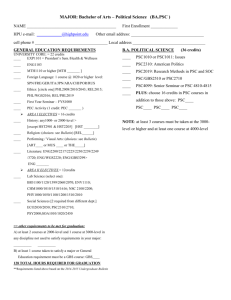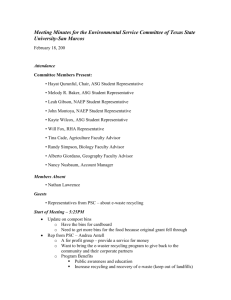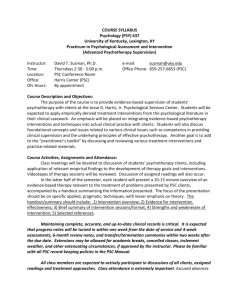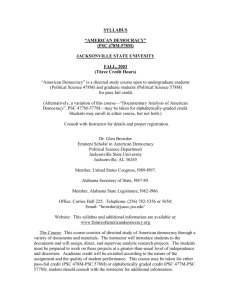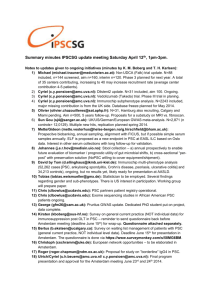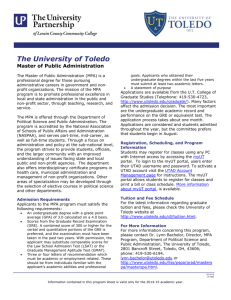Physical Science Essential Standard
advertisement
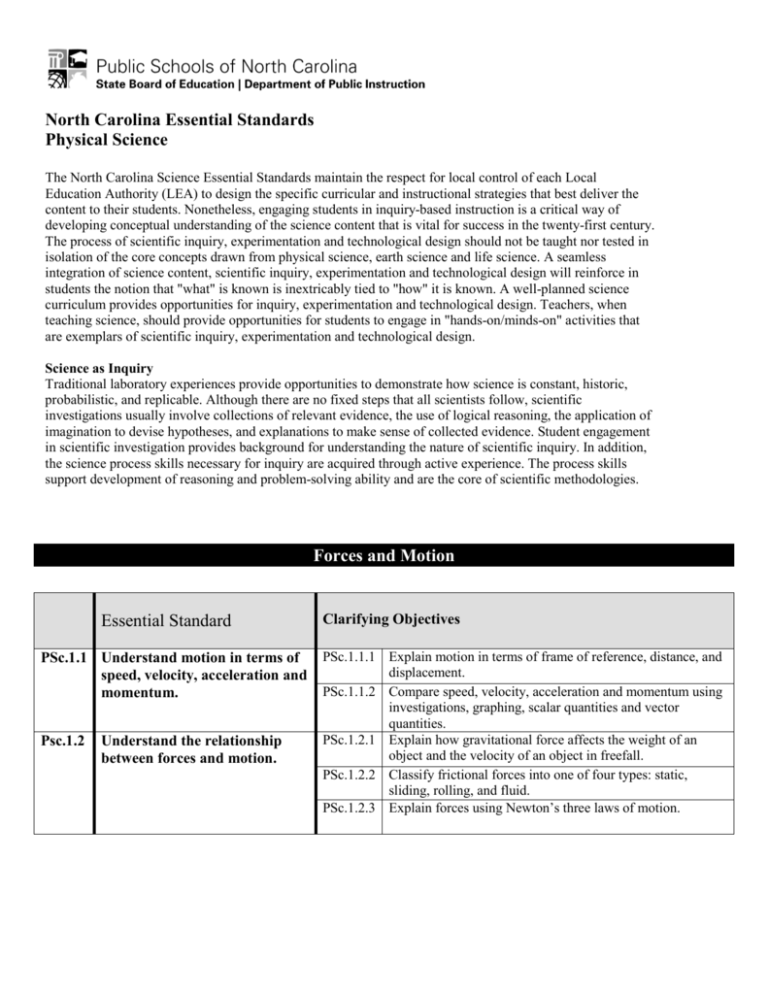
North Carolina Essential Standards Physical Science The North Carolina Science Essential Standards maintain the respect for local control of each Local Education Authority (LEA) to design the specific curricular and instructional strategies that best deliver the content to their students. Nonetheless, engaging students in inquiry-based instruction is a critical way of developing conceptual understanding of the science content that is vital for success in the twenty-first century. The process of scientific inquiry, experimentation and technological design should not be taught nor tested in isolation of the core concepts drawn from physical science, earth science and life science. A seamless integration of science content, scientific inquiry, experimentation and technological design will reinforce in students the notion that "what" is known is inextricably tied to "how" it is known. A well-planned science curriculum provides opportunities for inquiry, experimentation and technological design. Teachers, when teaching science, should provide opportunities for students to engage in "hands-on/minds-on" activities that are exemplars of scientific inquiry, experimentation and technological design. Science as Inquiry Traditional laboratory experiences provide opportunities to demonstrate how science is constant, historic, probabilistic, and replicable. Although there are no fixed steps that all scientists follow, scientific investigations usually involve collections of relevant evidence, the use of logical reasoning, the application of imagination to devise hypotheses, and explanations to make sense of collected evidence. Student engagement in scientific investigation provides background for understanding the nature of scientific inquiry. In addition, the science process skills necessary for inquiry are acquired through active experience. The process skills support development of reasoning and problem-solving ability and are the core of scientific methodologies. Forces and Motion Essential Standard PSc.1.1 Understand motion in terms of speed, velocity, acceleration and momentum. Psc.1.2 Understand the relationship between forces and motion. Clarifying Objectives PSc.1.1.1 Explain motion in terms of frame of reference, distance, and displacement. PSc.1.1.2 Compare speed, velocity, acceleration and momentum using investigations, graphing, scalar quantities and vector quantities. PSc.1.2.1 Explain how gravitational force affects the weight of an object and the velocity of an object in freefall. PSc.1.2.2 Classify frictional forces into one of four types: static, sliding, rolling, and fluid. PSc.1.2.3 Explain forces using Newton’s three laws of motion. North Carolina Essential Standards Physical Science Matter: Properties and Change Essential Standard Clarifying Objectives PSc.2.1 Understand types, properties, and structure of matter. PSc.2.2 Understand chemical bonding and chemical interactions. PSc.2.3 Understand the role of the nucleus in radiation and radioactivity. PSc.2.1.1 Classify matter as: homogeneous or heterogeneous; pure substance or mixture; element or compound; metals, nonmetals or metalloids; solution, colloid or suspension. PSc.2.1.2 Explain the phases of matter and the physical changes that matter undergoes. PSc.2.1.3 Compare physical and chemical properties of various types of matter. PSc.2.1.4 Interpret data presented in Bohr model diagrams and dot diagrams for atoms and ions of elements 1 through 18. PSc.2.2.1 Infer valence electrons, oxidation number, and reactivity of an element based on its location in the Periodic Table. PSc.2.2.2 Infer the type of chemical bond that occurs, whether covalent, ionic or metallic, in a given substance. PSc.2.2.3 Predict chemical formulas and names for simple compounds based on knowledge of bond formation and naming conventions. PSc.2.2.4 Exemplify the law of conservation of mass by balancing chemical equations. PSc.2.2.5 Classify types of reactions such as synthesis, decomposition, single replacement or double replacement. PSc.2.2.6 Summarize the characteristics and interactions of acids and bases. PSc.2.3.1 Compare nuclear reactions including alpha decay, beta decay and gamma decay; nuclear fusion and nuclear fission. PSc.2.3.2 Exemplify the radioactive decay of unstable nuclei using the concept of half-life. Energy: Conservation and Transfer Essential Standard PSc.3.1 Understand the types of energy, conservation of energy and energy transfer. Clarifying Objectives PSc.3.1.1 Explain thermal energy and its transfer. PSc.3.1.2 Explain the law of conservation of energy in a mechanical system in terms of kinetic energy, potential energy and heat. PSc.3.1.3 Explain work in terms of the relationship among the applied force to an object, the resulting displacement of the object and the energy transferred to an object. North Carolina Essential Standards Physical Science Essential Standard PSc.3.2 Understand the nature of waves. PSc.3.3 Understand electricity and magnetism and their relationship. Clarifying Objectives PSc.3.1.4 Explain the relationship among work, power and simple machines both qualitatively and quantitatively. PSc.3.2.1 Explain the relationships among wave frequency, wave period, wave velocity and wavelength through calculation and investigation. PSc.3.2.2 Compare waves (mechanical, electromagnetic, and surface) using their characteristics. PSc.3.2.3 Classify waves as transverse or compressional (longitudinal). PSc.3.2.4 Illustrate the wave interactions of reflection, refraction, diffraction, and interference. PSc.3.3.1 Summarize static and current electricity. PSc.3.3.2 Explain simple series and parallel DC circuits in terms of Ohm’s law. PSc.3.3.3 Explain how current is affected by changes in composition, length, temperature, and diameter of wire. PSc.3.3.4 Explain magnetism in terms of domains, interactions of poles, and magnetic fields. PSc.3.3.5 Explain the practical applications of magnetism.

